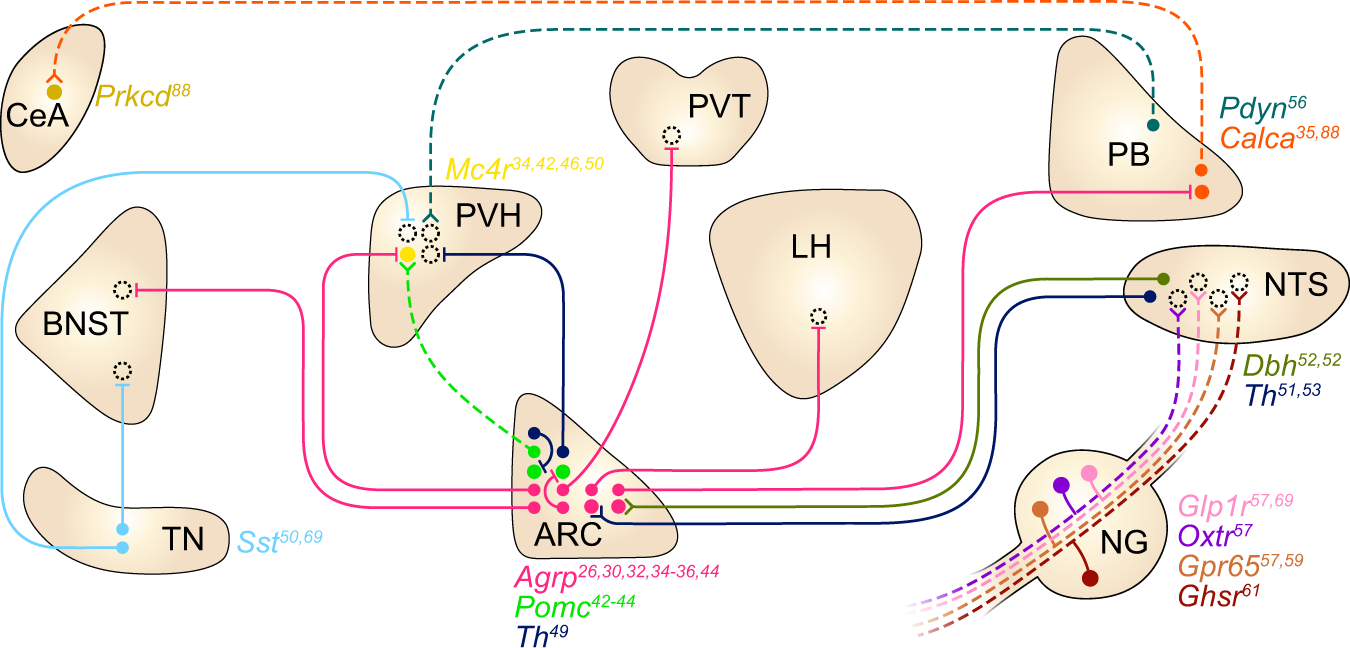
When it comes to understanding the intricacies of feeding behavior, neural circuits play a central role. These complex networks of interconnected neurons within the brain are responsible for driving the essential processes involved in our feeding and satiety responses. But did you know that neural circuits in feeding behavior are filled with extraordinary features that continue to fascinate scientists?
In this article, we will unravel 11 extraordinary facts about neural circuits in feeding behavior that will astound you. From the role of the hypothalamus in regulating hunger and satiety to the intricate mechanisms behind cravings and food preferences, these facts shed light on the remarkable complexity and efficiency of our brain’s neural circuits when it comes to our most basic survival instinct – feeding.
Key Takeaways:
- Neural circuits in the brain control how animals eat. These circuits can change based on things like food, hormones, and even how the environment feels, affecting an animal’s eating habits.
- The brain’s circuits for eating are connected to the gut and can be influenced by hormones and environmental factors. Understanding these circuits can help find new ways to treat obesity.
Neural circuits control feeding behavior in animals
Neural circuits are intricate networks of neurons that play a crucial role in controlling feeding behavior in animals. These circuits enable the coordinated regulation of appetite, satiety, and food intake.
The hypothalamus is a key player in feeding behavior
The hypothalamus, a region of the brain, is a central hub where neural circuits involved in feeding behavior converge. It integrates various signals from the body and orchestrates the complex orchestration of hunger and fullness sensations.
Neural circuits involved in feeding behavior are highly adaptable
The neural circuits responsible for feeding behavior are not static but exhibit remarkable plasticity. They can be modified by factors such as diet, hormonal fluctuations, and even environmental cues, thus influencing an animal’s eating habits.
Sensory input plays a crucial role in neural circuits for feeding behavior
Sensory cues, such as the smell or sight of food, activate specific neural circuits that initiate the feeding response. These circuits integrate sensory information to trigger appropriate motor and physiological responses for feeding.
Neural circuits involved in feeding behavior are interconnected with reward pathways
Feeding behavior is closely linked to the brain’s reward system. Neural circuits involved in feeding interact with reward pathways, which provide a sense of pleasure and reinforce the association between food consumption and positive feelings.
Neural circuits in feeding behavior exhibit evolutionary conservation
The fundamental principles underlying neural circuits controlling feeding behavior show remarkable evolutionary conservation across species. This suggests that the mechanisms governing food intake have been honed over millions of years of evolution.
Dysfunctional neural circuits in feeding behavior can lead to eating disorders
Disruptions in the intricate balance of neural circuits controlling feeding behavior can result in eating disorders such as anorexia nervosa, bulimia, or binge eating disorder. Understanding these circuits is crucial for developing effective treatments for such disorders.
Neural circuits for feeding behavior interact with the gut-brain axis
The gut-brain axis, a bidirectional communication system between the gastrointestinal tract and the brain, plays a crucial role in feeding behavior. Neural circuits involved in feeding interact with signals from the gut, influencing appetite and food choices.
Hormones influence neural circuits in feeding behavior
Hormones, such as leptin and ghrelin, play a significant role in regulating neural circuits involved in feeding behavior. These hormones signal to the brain about the body’s energy stores and affect appetite, satiety, and food intake.
Environmental factors can impact neural circuits for feeding behavior
The neural circuits for feeding behavior can be influenced by environmental factors, such as stress, social interactions, and availability of food. These factors can modulate the activity of neural circuits, leading to variations in feeding behavior.
Research on neural circuits in feeding behavior can inform obesity treatments
Studying the neural circuits involved in feeding behavior provides valuable insights into the complex mechanisms underlying obesity. Understanding these circuits can pave the way for innovative therapeutic approaches to manage and treat obesity.
Conclusion
Neural circuits play a crucial role in regulating feeding behavior in organisms. Through intricate networks of neurons and communication pathways, these circuits provide the foundation for various physiological and behavioral processes associated with feeding. The extraordinary facts about neural circuits involved in feeding behavior shed light on the complexity and sophistication of the brain’s control over our eating habits.From the ability of neural circuits to regulate hunger and satiety signals to the remarkable plasticity that allows for adaptive changes in feeding patterns, these facts demonstrate the remarkable intricacy of the brain’s mechanisms. Moreover, the integration of sensory information and the coordination of motor responses through neural circuits enable precise control over food intake and optimize energy balance.Understanding these extraordinary facts about neural circuits in feeding behavior can pave the way for advancements in fields like neuroscience, nutrition, and even the development of therapeutic interventions for conditions related to eating disorders and obesity. By unraveling the mysteries of these circuits, scientists can gain insights into the underlying mechanisms of feeding behavior, offering potential avenues for improving human health.
FAQs
1. How do neural circuits regulate feeding behavior?
Neural circuits involved in feeding behavior integrate various signals from the body and external environment to regulate hunger and satiety. These circuits receive input from sensory systems and hormonal cues to coordinate motor responses and control food intake.
2. Can neural circuits adapt to changes in feeding behavior?
Yes, neural circuits exhibit remarkable plasticity, allowing them to adapt to changes in feeding behavior. For instance, when food availability is limited, these circuits can undergo changes that promote more efficient energy usage and decrease appetite.
3. Are neural circuits involved in feeding behavior the same in all organisms?
No, neural circuits involved in feeding behavior can vary across different species. However, there are certain fundamental principles and shared mechanisms that underlie feeding behavior in diverse organisms.
4. How do neural circuits integrate sensory information during feeding?
Neural circuits integrate sensory information from taste, smell, and visual cues to assess the palatability and nutritional value of food. This information influences feeding decisions and helps optimize energy balance.
5. Can disruptions in neural circuits lead to eating disorders?
Yes, disruptions in neural circuits involved in feeding behavior can contribute to eating disorders such as anorexia nervosa, bulimia, and binge eating disorder. Understanding the underlying neural mechanisms can aid in the development of targeted interventions for these conditions.
Unraveling mysteries of neural circuits in feeding behavior is just scratching surface. Dive deeper into captivating world of neural circuits and their intricate workings. Hungry for more? Explore fascinating realm of feeding behavior in eggeating snakes, whose unique adaptations will leave you amazed.
Was this page helpful?
Our commitment to delivering trustworthy and engaging content is at the heart of what we do. Each fact on our site is contributed by real users like you, bringing a wealth of diverse insights and information. To ensure the highest standards of accuracy and reliability, our dedicated editors meticulously review each submission. This process guarantees that the facts we share are not only fascinating but also credible. Trust in our commitment to quality and authenticity as you explore and learn with us.


